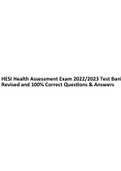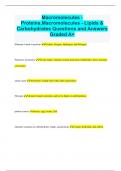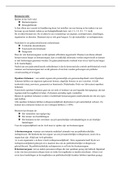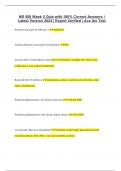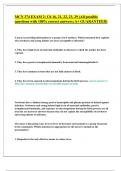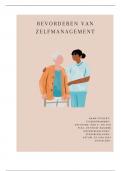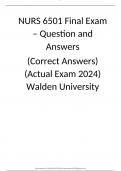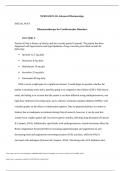Exam (elaborations)
HESI Health Assessment Exam 2022/2023 Test Bank Revised and 100% Correct Questions & Answers.
- Module
- Institution
HESI Health Assessment Exam 2022/2023 Test Bank Revised and 100% Correct Questions & Answers. Be sure of Passing your exam with this test bank because it have covered All Hesi Health Assessment (The test bank is 100% Verified with all correct Answers) pass your 2022/2023 hesi health Assessment wi...
[Show more]
